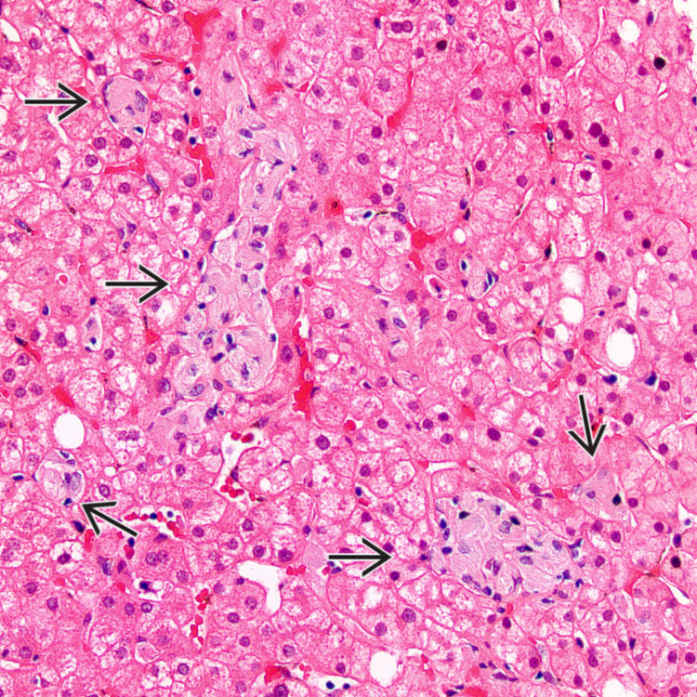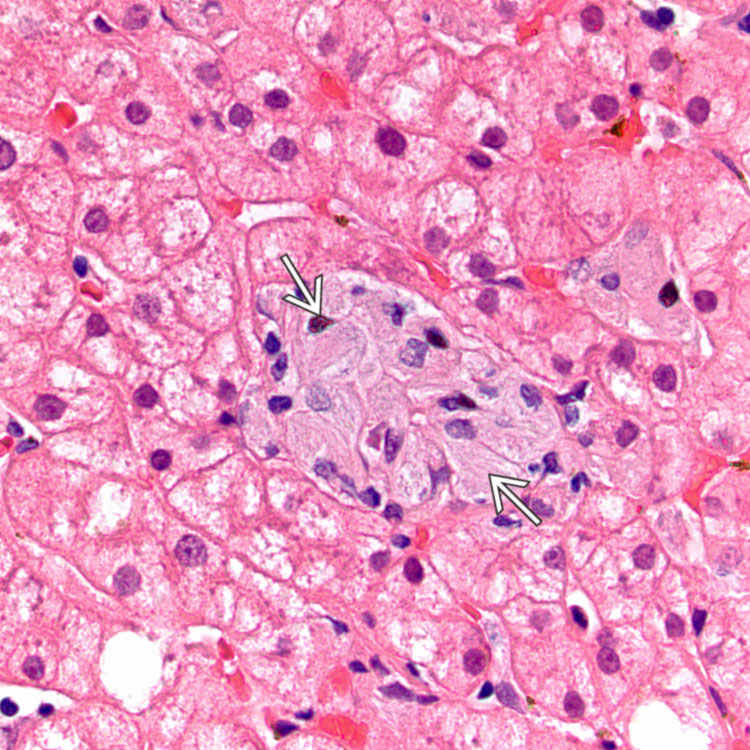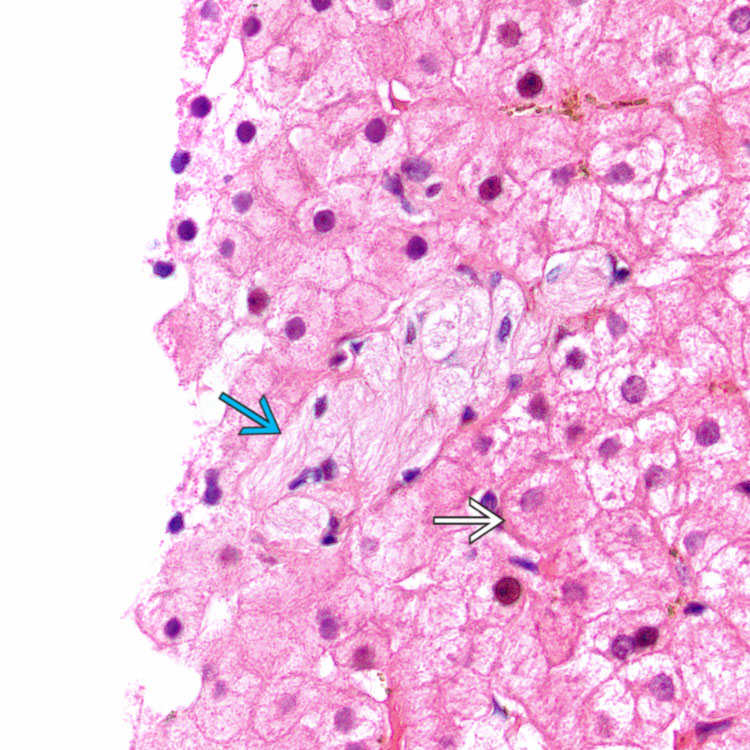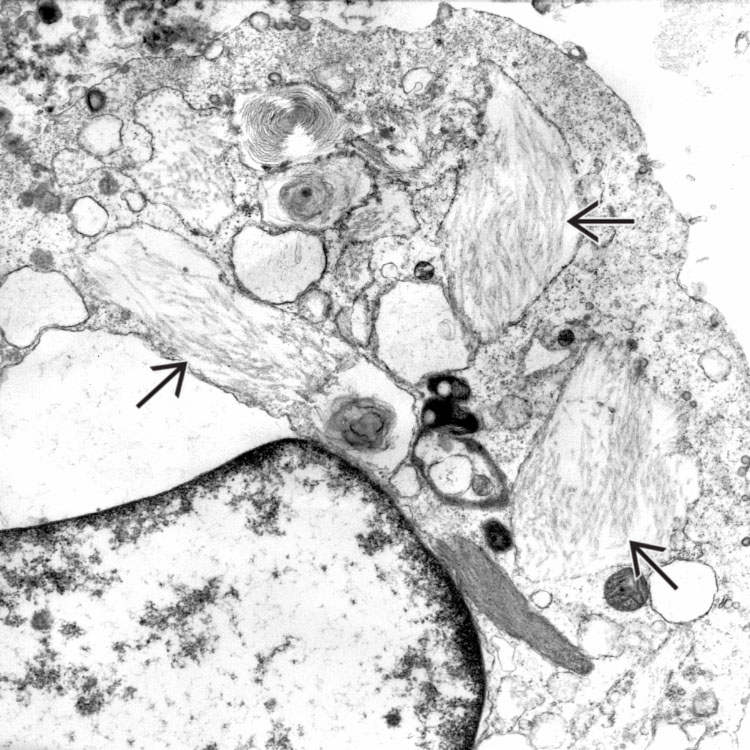Results in hepatosplenomegaly and pancytopenia
Top Differential Diagnoses

Clusters of enlarged foamy Kupffer cells
 with fibrillary, amphophilic cytoplasm are seen in the hepatic lobules. The clusters vary in size and shape.
with fibrillary, amphophilic cytoplasm are seen in the hepatic lobules. The clusters vary in size and shape.
These Gaucher cells demonstrate the characteristic fibrillary or striated cytoplasm reminiscent of wrinkled tissue paper
 .
.
In Gaucher disease, the characteristic Kupffer cell glucocerebroside inclusions exhibit a fibrillary or striated appearance
 . These cells have small, eccentric, and often wrinkled nuclei. In contrast, hepatocytes have more eosinophilic, granular cytoplasm and rounded nuclei
. These cells have small, eccentric, and often wrinkled nuclei. In contrast, hepatocytes have more eosinophilic, granular cytoplasm and rounded nuclei  .
.





 that are arranged in compact bundles. (Courtesy Z. Laszik, MD, PhD.)
that are arranged in compact bundles. (Courtesy Z. Laszik, MD, PhD.)

















